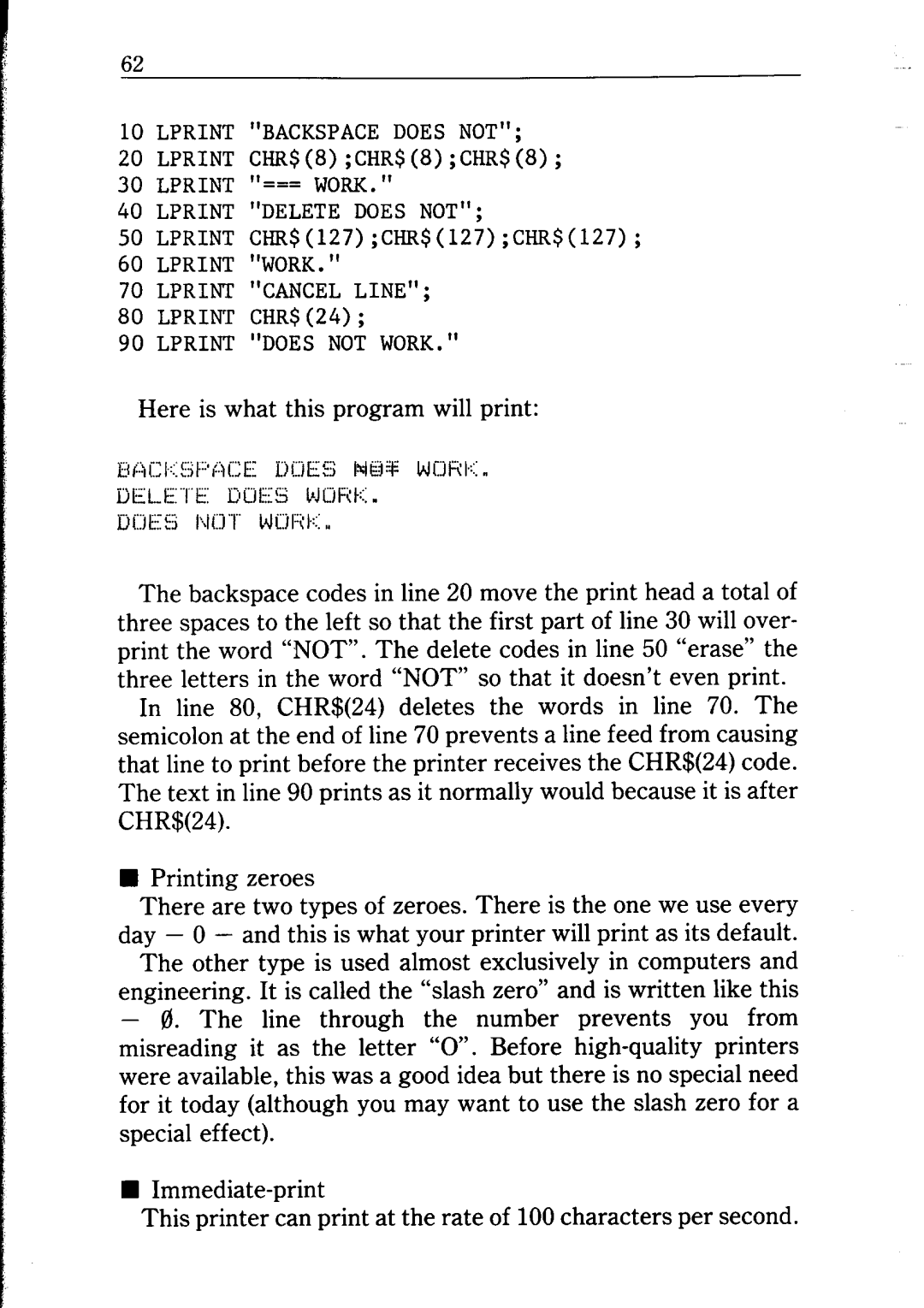
10 LPRINT "BACKSPACE DOES NOT";
20 LPRINT CHR$(8);CHR$(8);CHR$@);
30 LPRINT 'I===WORK."
40 LPRINT "DELETE DOES NOT";
50 LPRINT CHR$(127>;CHR$(127);CHR$(l27);
60 LPRINT "WORK."
70 LPRINT "CANCEL LINE";
80 LPRINT CHR$(24);
90 LPRINT "DOES NOT WORK."
Here is what this program will print:
The backspace codes in line 20 move the print head a total of three spaces to the left so that the first part of line 30 will over- print the word “NOT”. The delete codes in line 50 “erase” the three letters in the word “NOT” so that it doesn’t even print.
In line 80, CHR$(24) deletes the words in line 70. The semicolon at the end of line 70 prevents a line feed from causing that line to print before the printer receives the CHR$(24) code. The text in line 90 prints as it normally would because it is after CHR$(24).
nPrinting zeroes
There are two types of zeroes. There is the one we use every day - 0 - and this is what your printer will print as its default.
The other type is used almost exclusively in computers and engineering. It is called the “slash zero” and is written like this - 0. The line through the number prevents you from misreading it as the letter “0”. Before
n
This printer can print at the rate of 100 characters per second.
